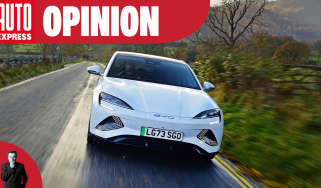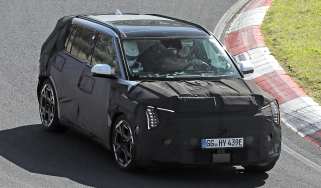Toyota Prius
What does £25 get you these days? A slap-up curry at your local tandoori? A half-decent seat at a football match? Whatever makes you tick, the chances are £25 would come in very handy. And that's exactly the sum we're saving every week by having a Toyota Prius on our fleet.

What does £25 get you these days? A slap-up curry at your local tandoori? A half-decent seat at a football match? Whatever makes you tick, the chances are £25 would come in very handy. And that's exactly the sum we're saving every week by having a Toyota Prius on our fleet.
How? The Auto Express car park is right in the middle of London's Congestion Charge zone, so every car driving in or out is hit with a £5 charge. In a rare moment of compassion, the politicians behind the scheme decided that eco-friendly models, such as the Prius, would be exempt.
We ran a first-generation Prius in 2001, and while it wasn't entirely suited to UK tarmac - the chassis was designed for downtown Tokyo, not bouncing B-roads - the hybrid technology's potential shone through. The new car, which arrived with us last month, marks an improvement in nearly every area.
First, there's the design. It still has a pleasant quirkiness to it, but the latest Prius is much better looking, inside and out. It's also more practical, with a full-size hatch replacing the old car's boot. Indeed, carrying ability is one of the Prius's strongest suits. Even though the battery pack is at the back, the seats fold flat, giving a long and wide load area.
There are additional storage areas under the boot floor and in the recesses behind the wheelarches. Up front, the driving environment is much improved, with modern piano black facings and a more conventional layout. But the seating position is a bit odd, as there's no steering wheel reach adjustment or height control for the seat - although neither has caused any discomfort on long trips.
I've also found the gear selector easier to use. Where the old Prius's lever looked more suited to changing railway points, the new car has a smaller control which can be shifted with fingertips. The only flaw is that the shift pattern seems back to front - you move the lever forwards to go backwards and vice versa, which can be confusing.
The driving experience is also improved. For the uninitiated, the Prius's hybrid system combines two different power sources to maximise each one's strengths. The petrol engine provides the grunt to drive at normal speeds, while the electric motor delivers zero-emission power at town pace. The petrol unit charges the battery on the open road, so when you're crawling through traffic, it cuts out and lets the electric motor take over. Simple.
Thankfully, driving the Prius is a lot easier than understanding its technology. The CVT gearbox is smooth, while the brakes and steering have more feel and weight than before. You never forget you're driving something out of the ordinary, but it's a very relaxing car in town. The transition between electric and petrol power is seamless. In the old Prius, the controls shook when the engine kicked in, but the changeover is now barely noticeable - the only way to tell what's going on under the bonnet is to call up the display, which shows you exactly where the flow of power is going to and from.
The Prius's fuel consumption has also provided us with a few smiles. To date, it has averaged an amazing 60.8mpg - an Auto Express long-termer record. With a tank range of more than 600 miles, the Prius has a serious aversion to petrol stations.
Problems to date? Well, being a Toyota, it still feels as good as the day it arrived. Cabin quality appears to be first class and, even when running in silent 'all-electric' mode, there's not so much as a creak, squeak or rattle. Very encouraging.
The next few months will be telling for the Prius. With a few trips on the cards, its long-distance capabilities will be put to the test. Should be fun.



